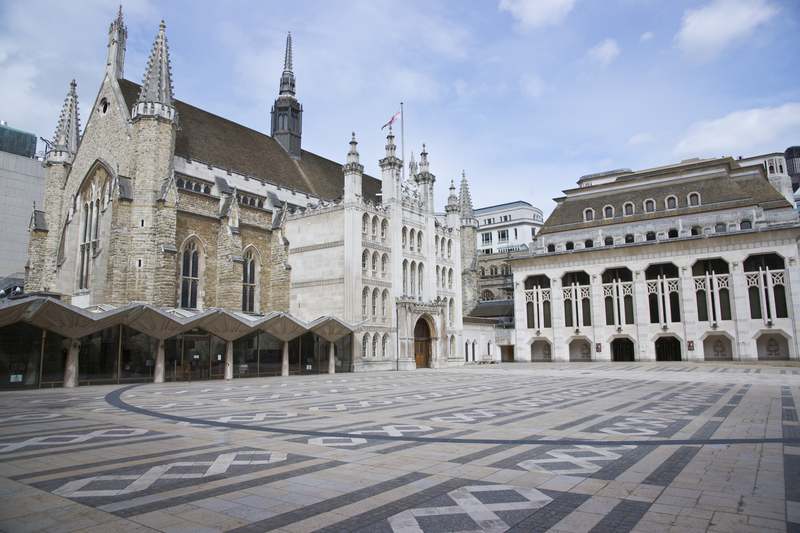Revolutionizing Indoor Spaces with Fresh Air
Posted on 26/08/2025
Revolutionizing Indoor Spaces with Fresh Air: The New Era of Healthy Living
How often have you thought about the quality of the air you breathe indoors? In an era where people spend over 90% of their time inside, the importance of fresh air in indoor spaces has never been more crucial. This comprehensive guide explores the transformative effects of introducing abundant fresh air into our homes, offices, and public buildings, and how it is changing the face of interior environments worldwide.
Understanding the Importance of Fresh Air Indoors
Within the last decade, scientific studies and public health organizations have emphasized the vital role of indoor air quality. Indoor spaces often accumulate:
- Volatile organic compounds (VOCs)
- Allergens and dust mites
- Pathogens and viruses
- Mold spores
- Pet dander
- CO2 buildup
Stagnant air filled with these pollutants can lead to decreased productivity, increased illness, and overall discomfort. That's why integrating more fresh air is not just a luxury--it's a necessity.

Key Benefits of Fresh Air in Indoor Environments
1. Enhanced Cognitive Function and Productivity
Recent research demonstrates a clear link between higher ventilation rates and improved cognitive performance. Offices and classrooms infused with fresh indoor air report:
- Better decision-making abilities
- Higher productivity and focus
- Reduced absenteeism
2. Reduction in Airborne Diseases
Pathogens thrive in poorly ventilated areas. By constantly introducing outdoor air, buildings can dilute, remove, or deactivate harmful viruses and bacteria, cutting down transmission rates dramatically, as seen during the COVID-19 pandemic.
3. Improved Sleep Quality
Studies have shown that a lower concentration of CO2 and higher oxygen levels at night--achieved through enhanced ventilation--lead to deeper, more restorative sleep. Fresh air systems in bedrooms are now trending among home wellness enthusiasts.
4. Allergy and Asthma Relief
With the right filtration and ventilation, a continuous stream of fresh, filtered air inside your home can drastically reduce exposure to allergens and trigger factors for asthma.
How Modern Technology is Revolutionizing Indoor Air
The push for healthier indoor spaces has accelerated innovation in both new construction and retrofitting older buildings. Here are some of the most impactful advancements:
Smart Ventilation Systems
Intelligent, sensor-based ventilation systems now adapt to real-time occupancy and pollution levels. These systems can:
- Measure CO2 and VOC concentration
- Automatically boost ventilation when high pollutant levels are detected
- Reduce energy waste by operating only when necessary
Brands like Airthings, Dyson, and Honeywell are leading this space, making customizable, app-controlled air management accessible to more households and businesses.
Energy Recovery Ventilators (ERVs) and Heat Recovery Ventilators (HRVs)
One concern with traditional ventilation is energy loss, especially in extreme climates. ERVs and HRVs are game-changing technologies that pre-condition incoming air using the outgoing air's energy, dramatically reducing heating and cooling costs.
Biophilic Design and Living Walls
Bringing the outdoors inside extends beyond windows and patios. Biophilic elements, like living green walls and indoor gardens, naturally increase oxygen levels, purify air, and make spaces lively and healthy.
Embracing Fresh Air in Different Indoor Spaces
Let's look at how the movement towards fresher air is transforming various environments:
1. Homes and Apartments
The rise in remote work and modern family life means we spend more time at home than ever before. Solutions like:
- Whole-house ventilation systems
- Window ventilation strategies
- Purifiers with HEPA filters and ionizers
are being prioritized in new builds and renovations. A healthy home starts with air you can trust.
2. Workplaces and Offices
Post-pandemic, businesses are investing in advanced HVAC upgrades, touchless entryways, and well-ventilated collaborative spaces. Leaders know that employee well-being equates to better performance and retention.
3. Schools and Learning Centers
Fresh air in educational environments is directly linked to student engagement and reduced sick days. Schools are adopting:
- Filtered mechanical ventilation
- Operable windows for natural cross-ventilation
- Outdoor classrooms whenever possible
4. Healthcare Facilities
The introduction of large volumes of fresh, sterile air in hospitals is critical for infection control, patient recovery, and staff safety.
5. Hospitality and Public Spaces
Hotels, airports, gyms, and restaurants are setting new standards in indoor air freshness, using visible air quality monitors to build guest trust and satisfaction.
Maximizing Fresh Air: Actionable Tips for Every Space
Upgrade Your Ventilation
- Install energy-efficient mechanical ventilation (HRVs/ERVs)
- Clean or replace air filters regularly
- Maintain and inspect ductwork to prevent leaks
Let Nature Work for You
- Open windows and doors during best outdoor conditions
- Incorporate air-purifying plants such as spider plants, peace lilies, and snake plants
- Create and maintain green walls or indoor gardens
Leverage Smart Air Quality Technology
- Use IoT-enabled sensors to monitor CO2, humidity, and VOCs
- Sync air cleaners with HVAC systems for real-time air optimization
Adopt Good Lifestyle Habits
- Avoid burning candles or incense indoors regularly
- Restrict smoking inside to eliminate persistent pollutants
- Limit use of harsh chemicals and opt for non-toxic cleaning products
Fresh Air Trends and the Future of Indoor Spaces
The intersection of wellness, technology, and sustainability is redefining building design. Future-ready fresh air solutions will emphasize:
- Personalized microclimates for every occupant
- Integration with smart home/office ecosystems
- Natural ventilation strategies in urban settings
- Transparent, real-time air quality data for all users
Global Certifications and Movements
The WELL Building Standard, LEED, and similar certifications are now rewarding designs that prioritize the consistent flow of clean, fresh air indoors--marking a shift towards healthier, more sustainable living and working environments.

Common Myths About Indoor Fresh Air
- Myth: "Opening windows is enough."
Fact: Outdoor air can be polluted, and mechanical solutions may be necessary in urban or industrial areas. - Myth: "Air purifiers alone will remove all contaminants."
Fact: Purifiers help but cannot replace proper ventilation for carbon dioxide or moisture management. - Myth: "Ventilation wastes energy."
Fact: Modern ERVs and HRVs minimize energy loss while maximizing indoor air quality.
Conclusion: The Future is Filled with Fresh Air
Revolutionizing indoor spaces with fresh air is not just a passing trend--it's a global movement towards better health, comfort, and productivity.
Whether you're remodeling a small apartment, running a thriving business, or planning a new public building, now is the time to prioritize the influx of clean, oxygen-rich air into your designs. By embracing advanced ventilation, biophilic design, and evidence-based wellness strategies, every indoor space can become a sanctuary of freshness.
Ready to revolutionize your indoor air? Invest in the right technology, adopt greener habits, and join the growing movement for healthy spaces. Your body--and mind--will thank you for years to come.
Experience the life-changing benefits of fresh air--no matter where you live, work, or play!


